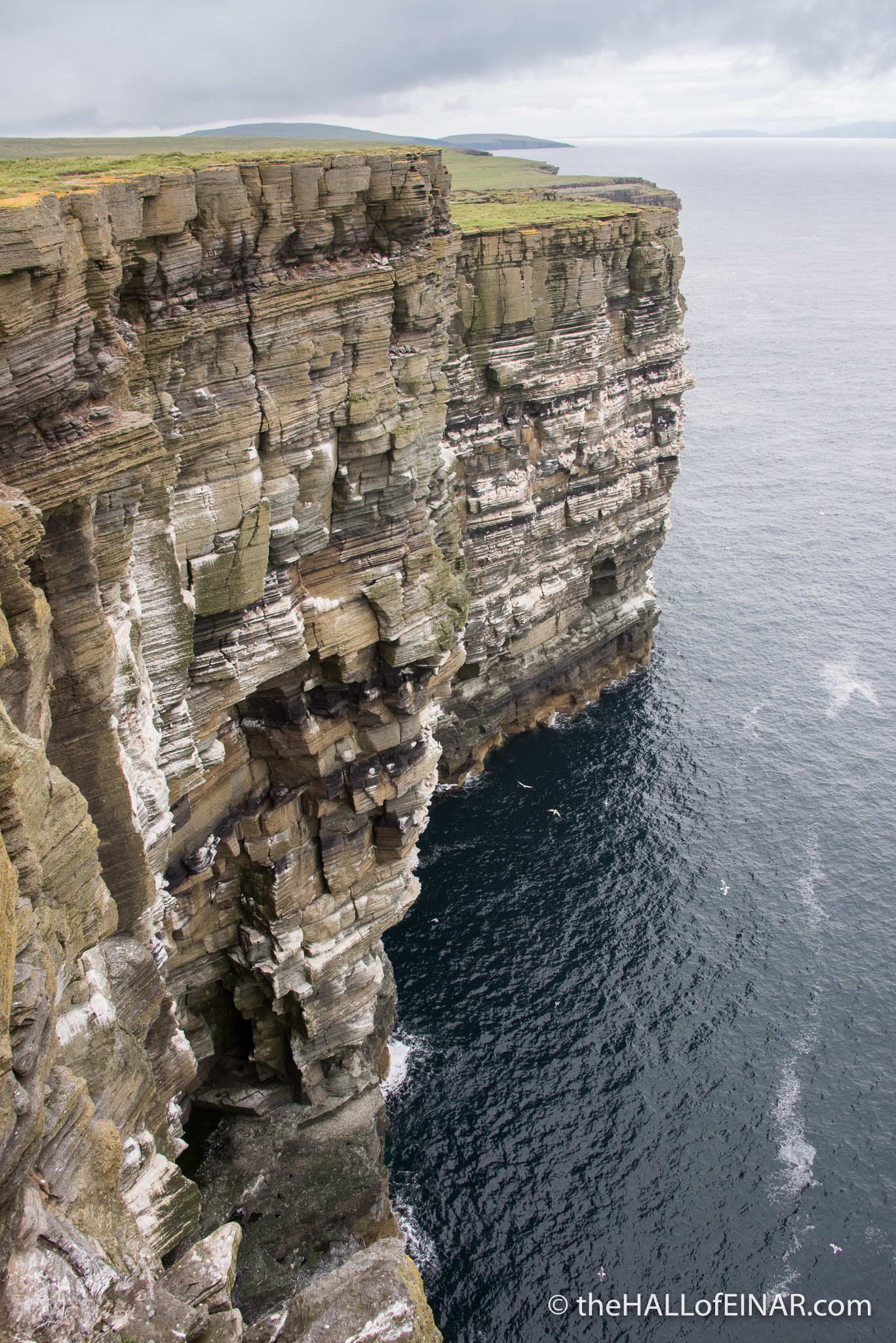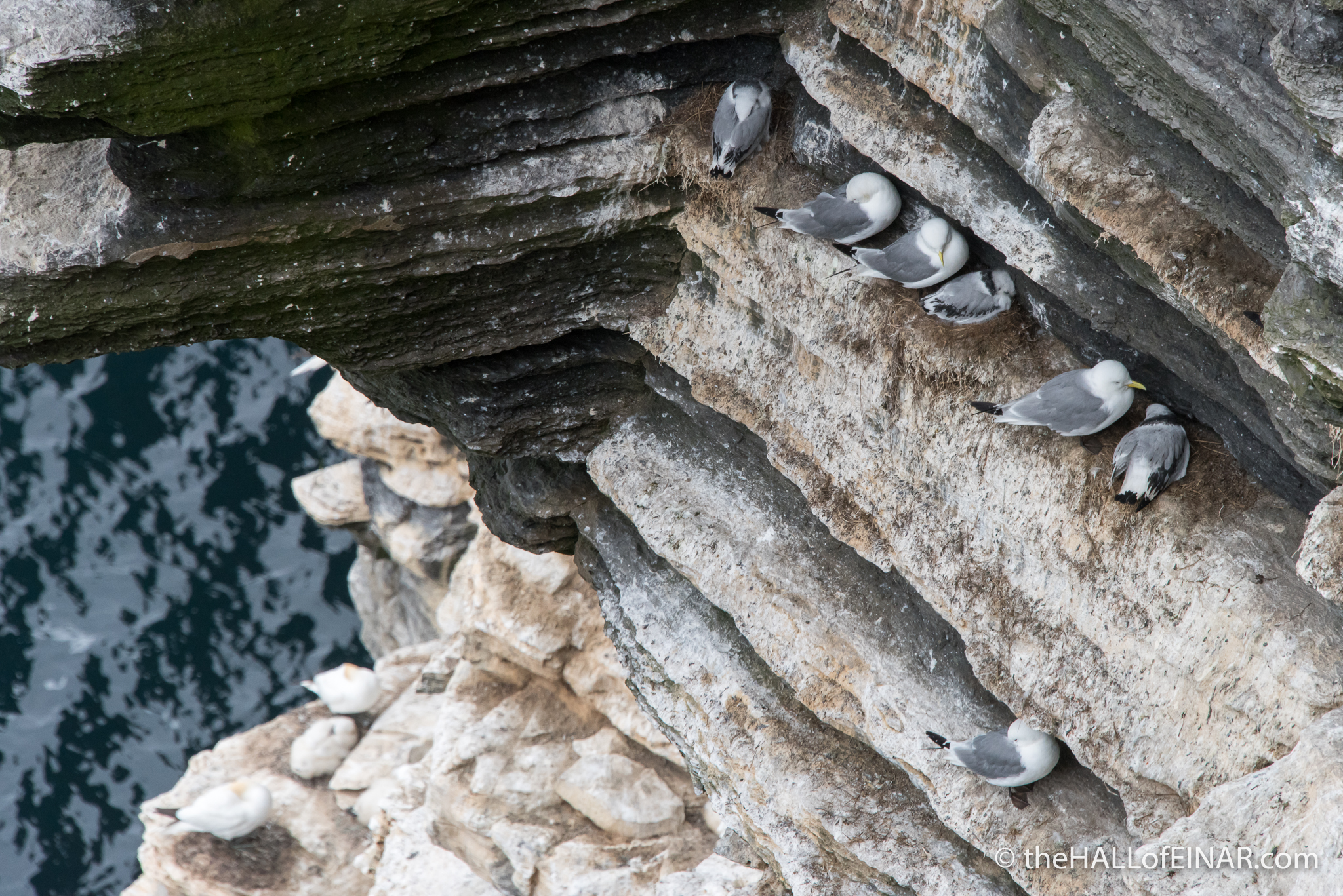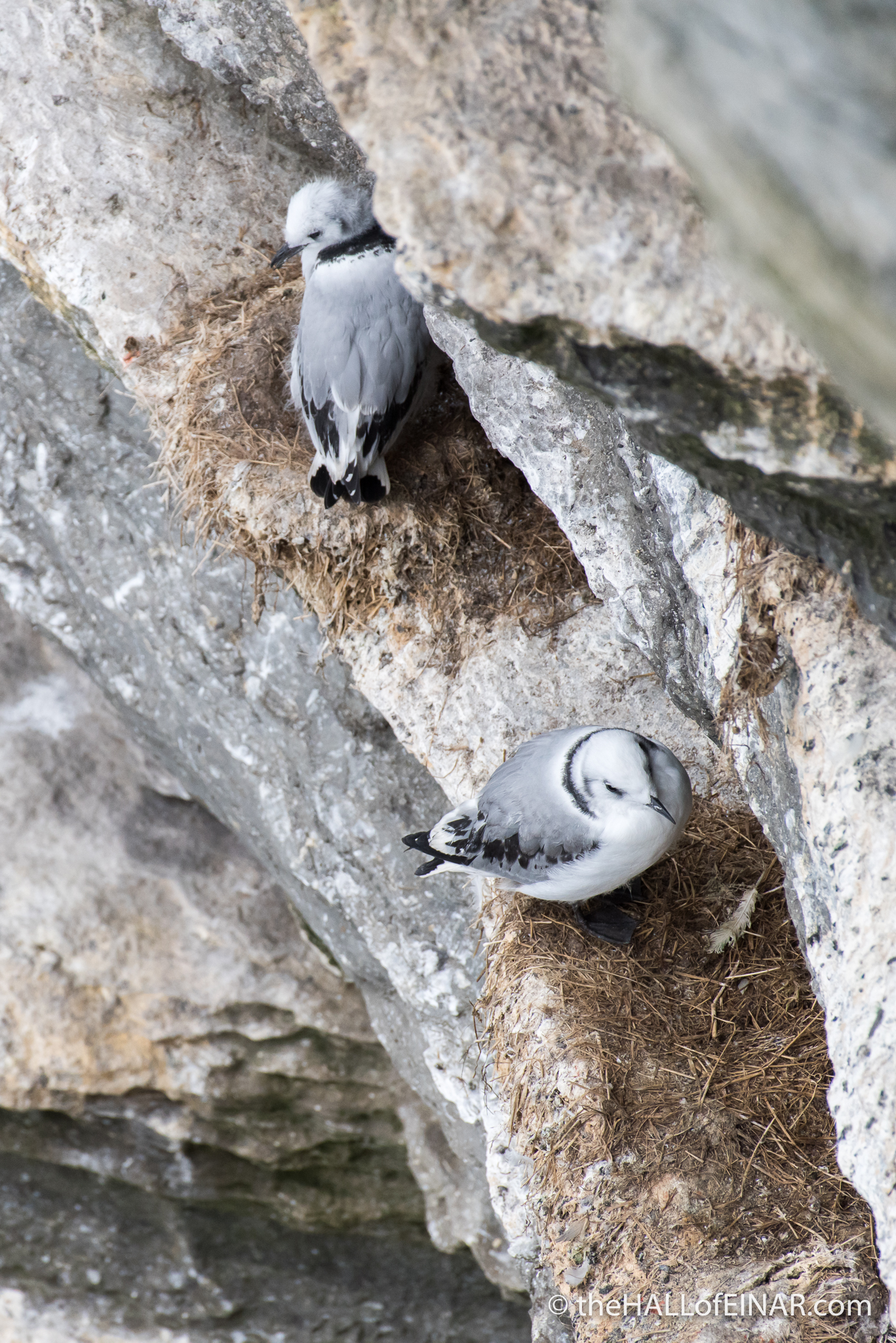Here Kitty Kitty – the birds without thumbs on their feet
The cliffs at Noup Head are a seabird city and full of the noise and the ripe smells of their breeding colonies.
We can hear a loud ‘kittee-wa-aaake, kitte-wa-aaake’ below us. There’s a structure to the cliffs, with precise layers for Guillemots, Razorbills, Gannets and these, a ledge full of Kittiwakes:
I love how delicate Kittiwakes look when flying and their beautiful grey countershading. They are sophisticated, elegant birds on the wing. They are the only gulls which only ever nest on cliffs. Today is the first time I’ve seen their chicks and they are a delight and a surprise with a lovely black collar and dark beaks:
As we watch them family reunion takes place as an adult returns from an expedition and the adults greet one another over their solitary chick. I also hadn’t expected their beaks to be so intensely coloured. Here they show the characteristic ‘dipped in ink’ black wingtips:
There are two species of Kittiwake on Earth, the Red-Legged and the Black Legged. We only have the Black-Legged here. Its scientific name is Rissa tridactyla which must mean that it only has three toes. I check it out and sure enough it has a very small or even no hind toe. I want to go back to the cliffs and look at their toes now. Why would Black-Legged Kittiwakes have no need for a back toe when all other gulls have them? There are also two sub-species of the Black-Legged Kittiwake, ours, Rissa tridactyla tridactyla (with small or no hind toe) and one from the Pacific, Rissa tridactyla pollicaris which has a normally developed hind-toe (pollex meaning thumb).
Hmmm, thumbless Atlantic Black-Legged Kittiwakes. You are all a marvel and a mystery.
Soon they will all be out at sea.



